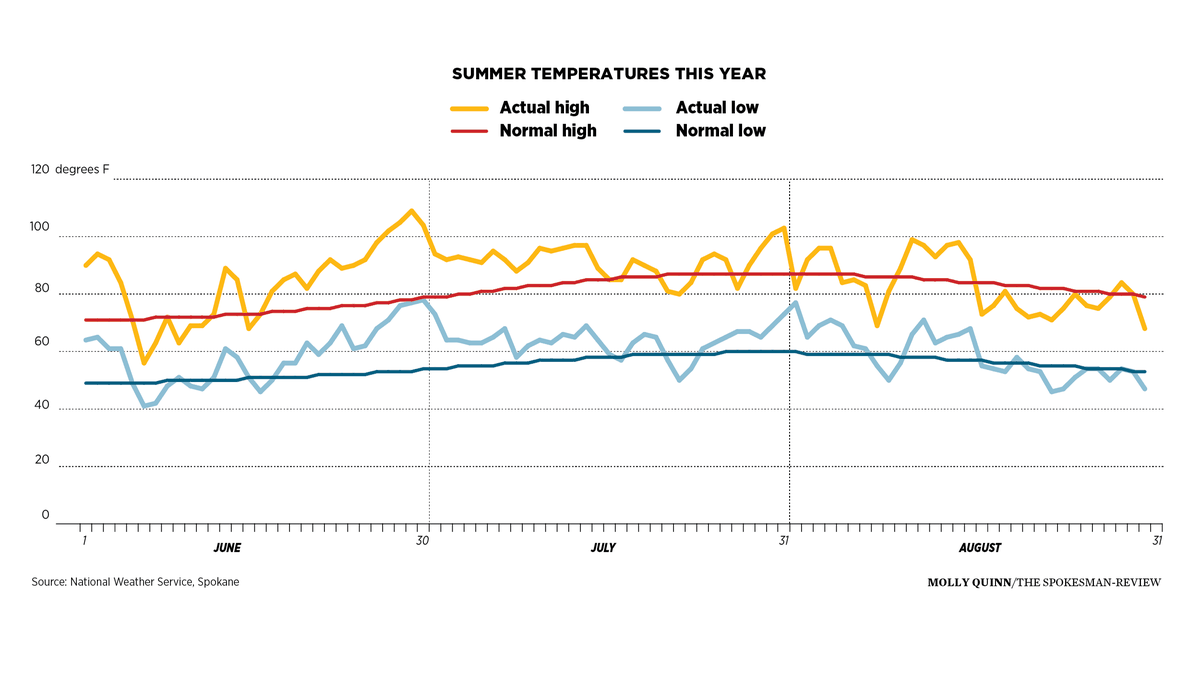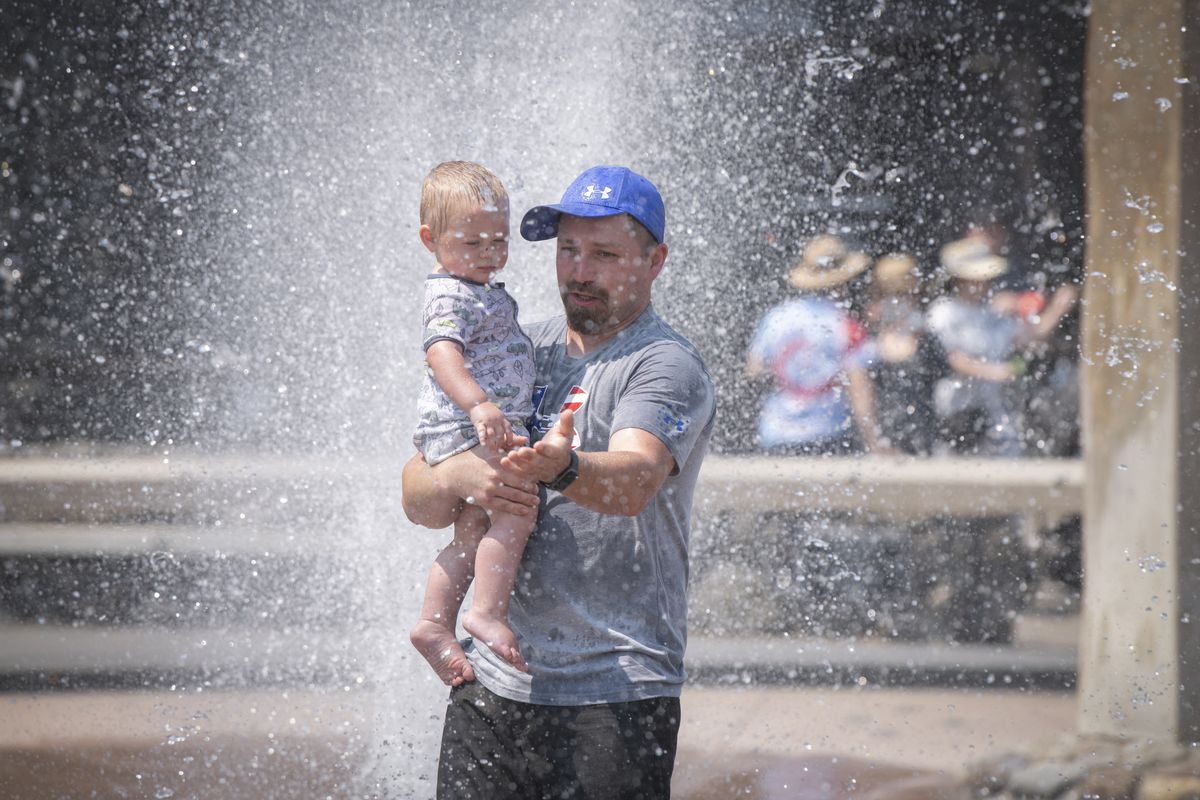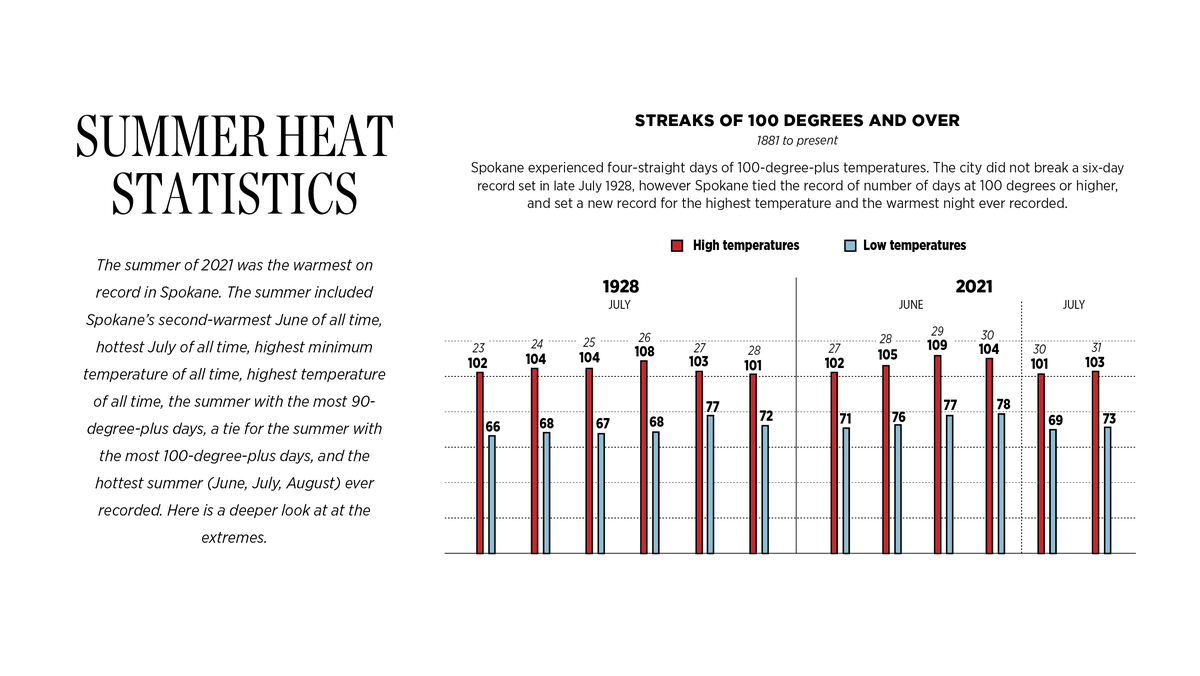Spokane broke all sorts of weather records this summer, but experts warn the heat ‘will be fairly typical’ as time goes on
Ryan Allen of Moses Lake carries his 13-month-old son, Rainier Allen, through the Rotary Fountain in Riverfront Park on July 13 to cool down as temperatures reached into the low 90s around lunchtime. (Jesse Tinsley/THE SPOKESMAN-REVIEW)Buy a print of this photo
The summer of 2021 achieved many records, but not in the ways a citizen of the Inland Northwest might want.
The summer of 2021 included Spokane’s second-warmest June, hottest July, highest minimum temperature, highest temperature, the most 90-degree-plus days, a tie for the most 100-degree-plus days, and the hottest summer (June, July, August) recorded.
“What’s worrying is that that’s expected to be more and more common as we move through the century,” said Professor Brian G. Henning, director of the Gonzaga Center for Climate, Society and the Environment.
“It’s expected that summers like this, rather than being exceptional, will be fairly typical by the time we reach the middle of the century.”
The “warmest summer” trend isn’t expected to immediately continue.
According to Todd Carter, a meteorologist at the National Weather Service of Spokane, the cooler years between 2015 (the second-hottest summer ) and 2021 are a clue pointing to having cooler summers for five or six years before trending warmer than 2021.
But with long-term warming trends such as summers of the past decade and 2021 being 3.03 degrees warmer than the average summer of 1990-1999, hot summers are likely to be more common and even warmer.
This information is especially alarming to Henning for a variety of reasons, one being the nighttime temperatures staying warm instead of cooling down.
“The night is particularly important for those people that don’t have air conditioning as there’s no real good way to cool off your house if it doesn’t get cool enough at night to pull in that cold night air, so that’s a major concern, especially for low-income residents,” Henning said.
Although warmer temperatures can potentially bring in more precipitation than usual, without rain, wildfire potential skyrockets and the drier vegetation can lead to more large-scale fires than the Inland Northwest has seen in the past.
More smoke from more fires can lead to unhealthy conditions for those in the region and bring lung damage, especially for those with pre-existing health conditions. Henning said those without air conditioning who rely on cool night air, get stuck in both hot and smoky conditions indoors.
Other health problems can occur, such as an increase in those having heat stress.
The environment is also directly affected, and not just from wildfires.
“It’s warming our streams and lakes, which is starting to affect the types of fish and wildlife that can survive in those. For example, redband trout need really cool mountain water, but increasingly our lakes and streams are going to be unsuitable for many of the endemic species,” Henning said.
“The ecosystem in our region is increasingly moving away from a snowpack watershed to a rain-based watershed, so that more and more of the precipitation during the winter will fall as rain, and even the parts falling as snow is melting earlier and faster.”
Despite the warming climate, some storms could become worse than before, just less frequent. According to Henning, warm air can hold more moisture, so an event such as a rain or snow storm could become much larger while also being condensed to a shorter time span instead of being consistent throughout the year.
Experts say human-caused climate change is to blame.
According to Henning, the burning of fossil fuels into the atmosphere acts like a blanket, trapping the sun’s heat and warming the planet.
“We need, as a society, to have the courage and forethought to be able to make responsible transitions away from coal, oil and natural gas, and we need to do it as quickly as reasonably possible in order to avoid the worst effects of climate change this century,” Henning said.





